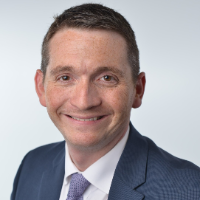Military Family Appreciation Month Expert Interview & Advocacy Guide
Counseling Schools Search
When you click on a sponsoring school or program advertised on our site, or fill out a form to request information from a sponsoring school, we may earn a commission. View our advertising disclosure for more details.
“We’ve seen a willingness to talk about these issues and do things about it. America’s very much invested in the well-being of its military, so the focus on their mental health has really been coming to the forefront.”
Dr. Paul Ingram, PhD, Assistant Professor at Texas Tech University
There are over 19 million military veterans currently living in the US, making up nearly 10 percent of the adult population. In addition, there are approximately 1.4 million active-duty members who are currently serving. In November, there are two events that acknowledge both our military and their family members.
November is Military Family Appreciation Month which is an opportunity to acknowledge the sacrifice given by active-duty military family members. While spouses, siblings, and parents may be serving, their families also serve by supporting their soldiers at home. Military families must move frequently, be used to long separations because of deployment, and understand military life and culture. This month was established in 1996 by the Armed Services YMCA and has been recognized by the US Government ever since.
Also, November 11 is Veterans Day. Established originally as Armistice Day in 1919 by President Wilson, it was a day set aside to commemorate the end of World War I. In 1954, President Eisenhower changed the name of the day to Veterans Day to honor all war veterans and not just World War I. This federally recognized holiday is a day to reflect on the service and sacrifice of those who have served in the military.
Military families and veterans face the same mental health issues as the general population, but they are generally more severe and more prevalent. Studies have found that up to 30 percent of active duty and reserve military personnel deployed in Iraq and Afghanistan have mental health care issues that require treatment. These issues can include post-traumatic stress disorder (PTSD), traumatic brain injury, and depression. The longer and more frequent the deployment, the higher the likelihood that a service member will need mental health care.
While mental health care services are readily available to veterans, many don’t access care because of the stigma. Continue reading to learn from expert Paul Ingram on veterans’ mental health care issues and what can be done to help veterans access care.
Meet the Expert: Paul Ingram, PhD

Dr. Paul Ingram is an assistant professor of psychological sciences at Texas Tech University. He holds a doctorate in counseling psychology from the University of Kansas and is a licensed psychologist in the state of Texas. He is also a research affiliate for the Department of Veteran Affairs.
Dr. Ingram currently oversees the Personality Assessment and Treatment Seeking (PATS) research lab, which focuses on evidence-based assessment as well as the barriers in accessing and continuing to access mental health treatment. He primarily works with military service members or veterans and aims to develop a diagnostic understanding of trauma, PTSD, and depression. His end goal is to be able to effectively identify individuals who have high clinical needs who may need additional treatment.
Veterans’ Mental Health Issues
Veterans may have the same mental health issues as the general population, such as depression, anxiety, and PTSD, but these issues don’t present themselves in the same way. Dr. Ingram notes that “there’s a number of ways that they differ. Most importantly is the fact that they’re more frequent and more severe. For example, let’s look at PTSD. Within the general population, there’s about an 8 percent prevalence of occurrence for PTSD. That number includes veterans, but when you look at veteran-only populations, generally speaking, you see about a 14 percent prevalence rate because they’re exposed to more traumatic and difficult events.”
He continues, “You also see a lot of traumatic brain injury not only just in folks that are deployed to combat zones but even just going through as many trainings as they’re going through. Overall, we see higher rates of depression along with higher rates of divorce and marital stress. It’s hard to be separated for a long time. Veterans have faced a lot of issues the general population faces, but they face them more frequently. And when they do end up having them, it is often more severe.”
Notably, veterans face the same hurdles to receiving treatment as the general population, but access isn’t the primary problem: “I think we have a ton of treatments that work wonderfully. We have a number of providers that can offer services, so it’s not a shortage of opportunities. One of the biggest barriers is the stigma towards mental health. It’s pretty pronounced within the VA, the military, and veteran populations,” says Dr. Ingram. “I think the more effort that goes into breaking down the stigma and saying it’s okay to ask for help and it’s okay to get help, the better they’re going to access care.”
For as long as there have been military operations, there have been veterans’ mental health issues. They just haven’t always been called the same thing. “We’ve known about these problems occurring for hundreds of years. It has been called ‘shell shock’ back during World War and ‘nostalgia’ during the Napoleonic Wars. We’ve even called it ‘combat fatigue.’ Now we call it ‘posttraumatic stress disorder,’” says Dr. Ingram.
Thankfully, there has been a favorable cultural shift in accessing mental health services in recent years, which has extended to the military. “We’ve seen a willingness to talk about these issues and do things about it. America’s very much invested in the well-being of its military, so the focus on their mental health has really been coming to the forefront.”
Awareness For Veterans’ Mental Health
Continuing awareness of veterans’ mental health issues is critical to them seeking and accessing treatment. According to Dr. Ingram, this is one of the most significant ways families and the general population can help veterans: “We’ve known about these issues for a long time, but it’s still tough to talk about them because there’s a culture of not talking about them. Even within the military mental health disorders are something that people often perceive as a weakness—and that’s just not true,” he says.
“When we talk about how we can intervene and how we can help veterans, one of the big ways is by making them aware not only are these things occurring often, but they are occurring a lot with people around them and that they don’t stick around,” says Dr. Ingram. “These aren’t problems that forever shift their lives. They’re just temporary roadblocks that we can move. And I think those messages are really important.”
Veterans Mental Health and Covid-19
“When it comes to mental health, Covid has had a lot of negative impacts. I can talk about how social isolation has gotten worse and how some of the social support structures haven’t been there. And that’s been true for veterans, just like everyone else. But one of the ways that I think Covid has actually helped mental health is that it led to a complete shift around the country in telehealth,” notes Dr. Ingram.
“Veterans have had to travel in order to get into a VA, sometimes pretty far distances when they’re not in an urban area. Very quickly, Covid made it so that providers had to offer services in the vet’s home. I don’t want to overlook the stress that Covid caused. There are lots of obvious negatives, but there are some positives. We would never have moved this quickly into telehealth had we not had that happen,” says Dr. Ingram.
According to Dr. Ingram, this shift to remote mental health services has been a fundamental change that has positively affected veterans. “It’s so much easier to keep in touch with patients. You don’t have to wait for someone to drive in,” he says. “When I started training with the Department of Veteran Affairs, I had a patient who drove from North Carolina to Kansas twice a year in order to have continuity with the same providers. He felt good with them, so he drove halfway across the country. With the expansion of telehealth, that veteran is able to see the people that he trusts, that he knows can help him, without the social cost of removing himself from his home, or economic costs or time cost. It’s so exciting to see this growth.”
Steps Mental Health Care Providers Can Take to Effectively Serve Veterans
Something Dr. Ingrams believes is critical to being a good mental health care provider to veterans is understanding where they are coming from. “I think everyone needs to understand a bit about military culture. That doesn’t necessarily mean you have to have been in the military, or they’ve had to have family in the military, but you have to understand a little bit about what that culture is and the language that goes into it. Veterans want to be able to talk to someone who understands them,” he says.
For instance, not every military veteran has had the same experiences or trauma. “Veterans have had a different set of experiences from the general public. And those experiences shift as service eras come and go. Vietnam was different from Desert Storm, which was different from post-9/11 service. And so it becomes really important that we have the language to understand, for example, what were the impacts of the draft? You need to have a working understanding so that when they are in therapy, they do not have to clarify every sentence. It’s a broader culture that becomes important to be able to know,” says Dr. Ingram.
Mental health providers can be proactive in learning military culture and language by seeking out and completing training. One such resource Dr. Ingram recommends is called the Strong Star Training Initiative. “Strong Star Initiative is a fantastic program that is based out of San Antonio. They are some of the leading researchers on PTSD in the country and they partner with the National Center for PTSD. In addition, they offer training for community clinicians so that they can be up to date on some of the evidence-based practices for veterans,” he says.
Workshops through Strong Star are available both online and in-person, which makes their training accessible to anyone.
Resources for Mental Health Providers in Veterans’ Mental Health
Here is a list of resources for counselors, marriage and family therapists, social workers, psychologists, and psychiatrists who are interested in working with veterans and their families:
- Strong Star Training Initiative – Strong Star is a leader in PTSD research whose primary objective is to provide training for mental health providers serving veterans. They offer training both in-person and online.
- Veteran Administration – The VA offers a library of resources for mental health providers who work with veterans, including clinical training on specific topics such as suicide prevention, traumatic brain injury, and substance use disorders.
- William & Mary School of Education – The William & Mary School of Education offers an entirely online accredited master’s of education in clinical mental health with an emphasis in military and veteran counseling. This program specifically trains graduates to work with populations who are currently serving or have left the service.

